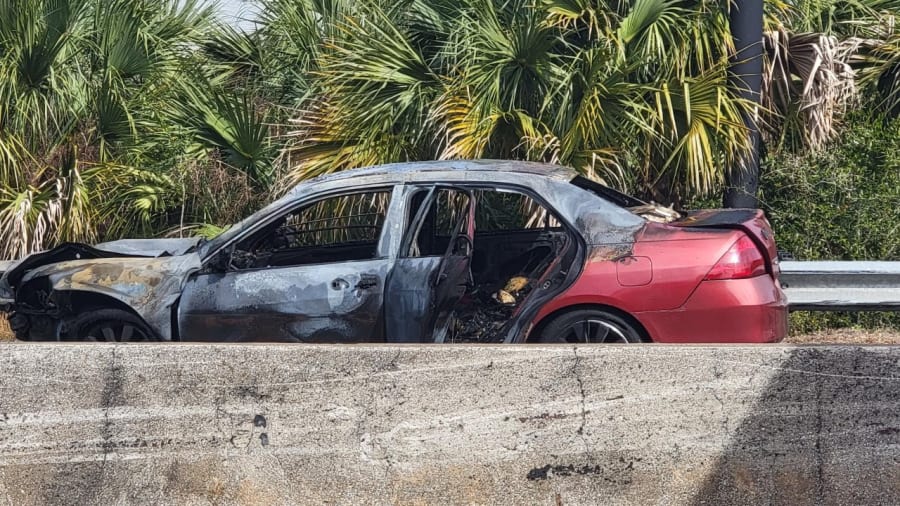JACKSONVILLE, Fla. – A car went up in flames on the Mathews Bridge on Sunday afternoon, causing the bridge to close while first responders worked to put out the fire. It’s a situation that a Jacksonville Fire and Recuse Department spokesperson said happens frequently.
According to the National Fire Protection Association, vehicle fires account for nearly one in every eight reported fires.
JFRD spokesperson Eric Prosswimmer says there are things car owners are doing and not doing that increase the risk of their vehicle erupting in flames while on the road.
One of the issues Prosswimmer said drivers face is not ensuring their vehicle is safe.
“Make sure it’s serviced regularly, and you don’t have fluid leaks,” Prosswimmer said.
The worst fluid leak to ignore is an oil leak, especially if you notice oil on the ground while your car is parked.
“An oil leak is a problem because it’s going to drip onto hot surfaces and it’s flammable,” Prosswimmer said.
Prosswimmer also named electrical issues as a common cause of car fires. For example, amateurs who install large and loud aftermarket speakers in their cars may not realize they’re putting a strain on the car’s electrical system.
“Somebody puts in a sound system or add things in. They do it themselves. They are not electrically inclined, and they overload the circuits and therefore, starts a fire,” Prosswimmer said.

While it’s unclear what caused the Sunday’s car fire on the Mathews Bridge that sent one person to a hospital, Prosswimmer said the first thing to do if the car catches fire while driving -- or even if you are on a narrow roadway like a bridge -- is to safely come to a stop. Then, get out of the vehicle.
He said injuries during car fires are uncommon, but when they do happen, it’s because people get back in the burning car to retrieve items, which is another mistake.
“Don’t open the hood or trunk because you’re adding oxygen to the fire and igniting it more. Don’t open up all your windows to clear out the smoke. You’re going to be feeding it oxygen. Shut your vehicle down. That will shut off your fuel pump that pumping gas to the engine. Those little things can give you extra time,” Prosswimmer said.
Prosswimmer also recommended drivers not pass by cars engulfed in flames in a lane on the road because trying to pass the car in narrow locations such as the Mathews bridge could put drivers in danger.
A spokesperson at P.D. of Jenkins Hyundai demonstrated how newer cars have a fire safety measure under the hood.
“We have a fire insulation pad. So, if the engine catches fire, these dots will melt, and the pad will lay over the engine. So, instead of oxygen getting to the fire as flames are coming up, this will cover it for you so that you have a couple of more minutes to get out of the car and to a safety zone.”




